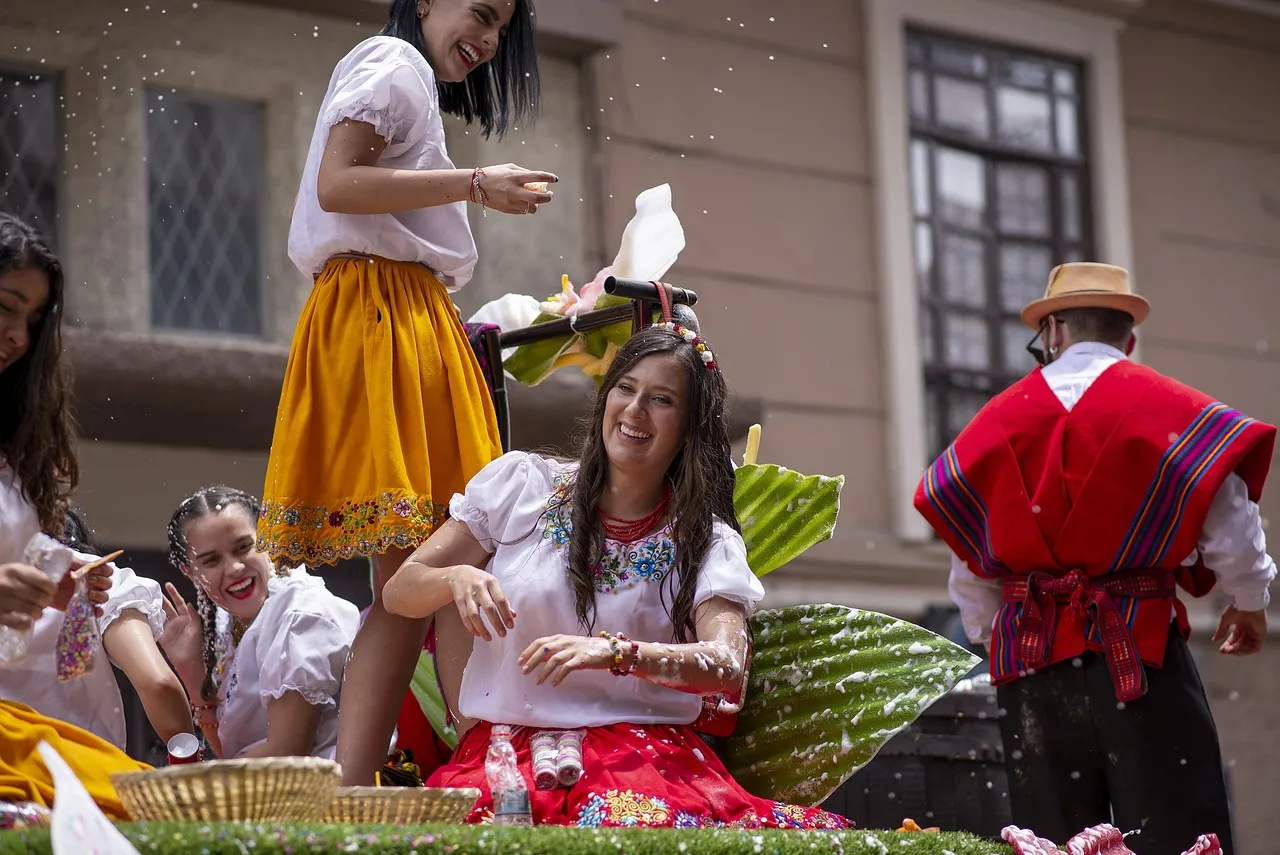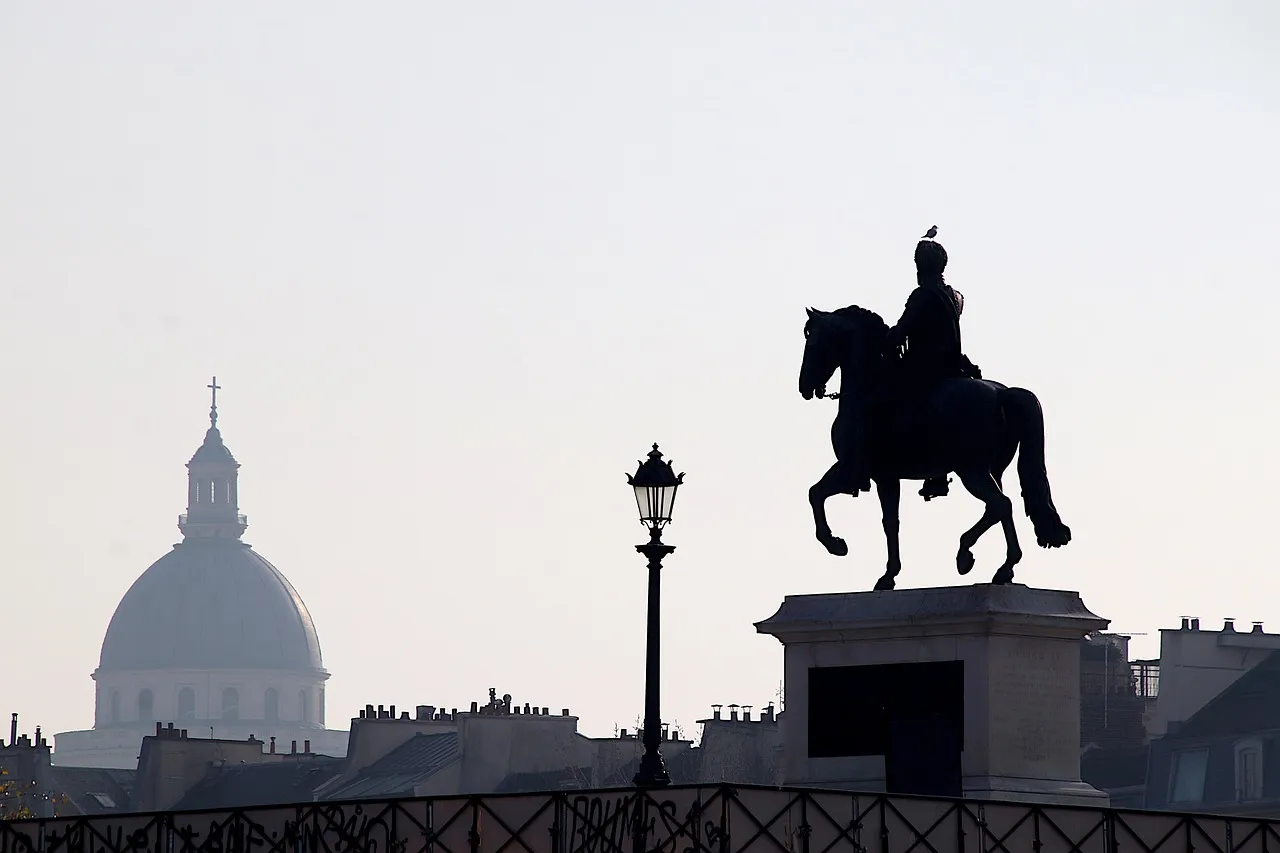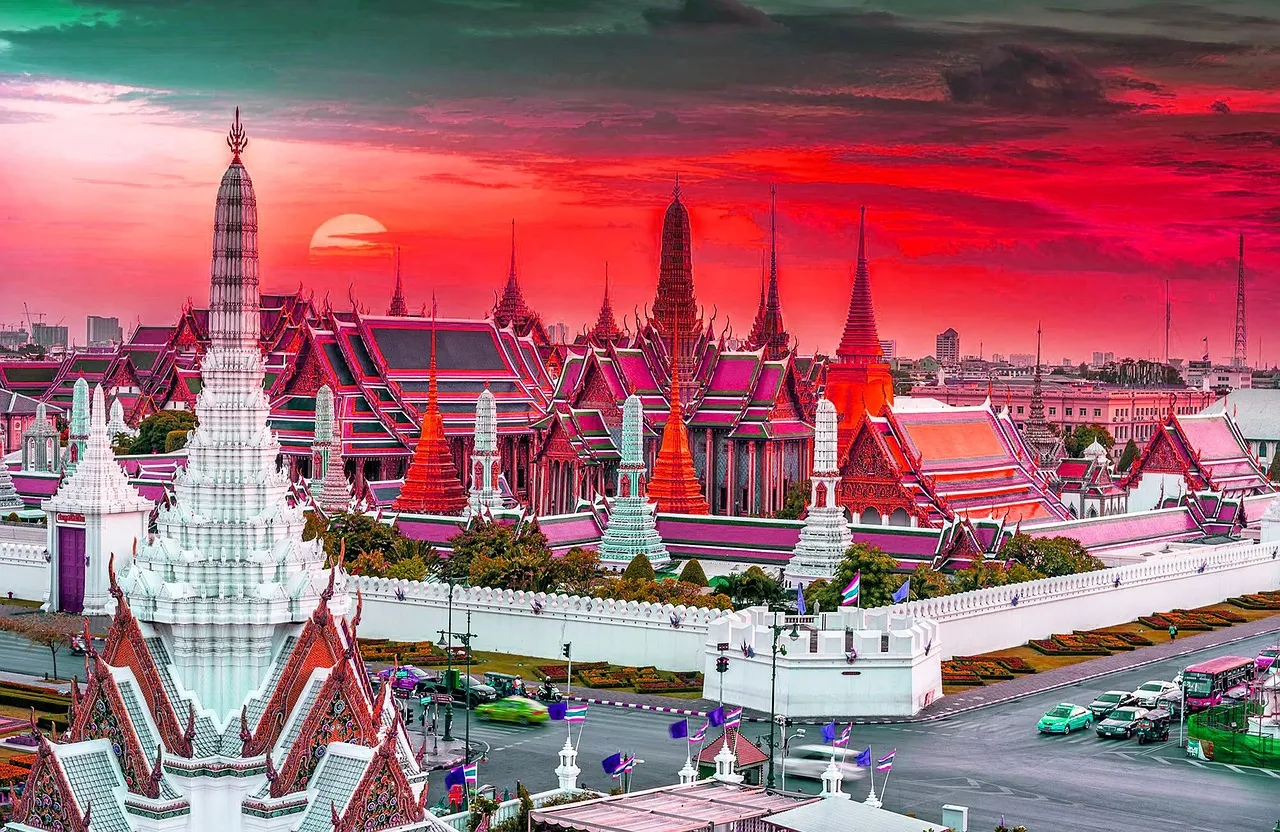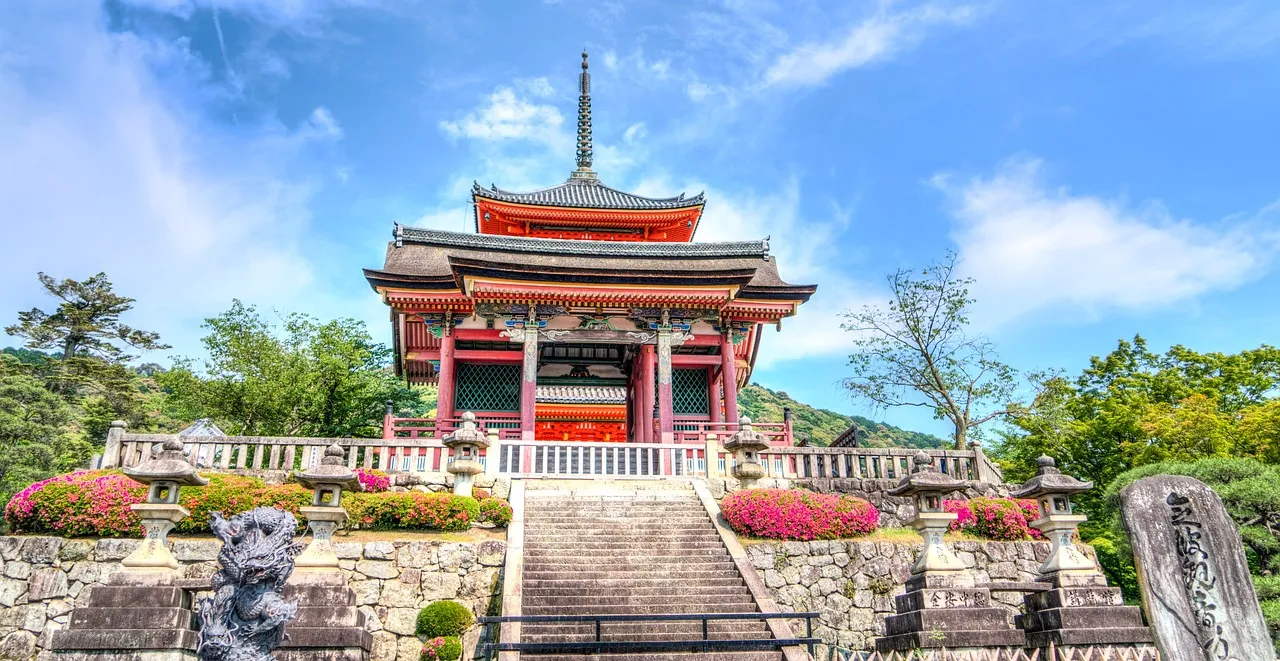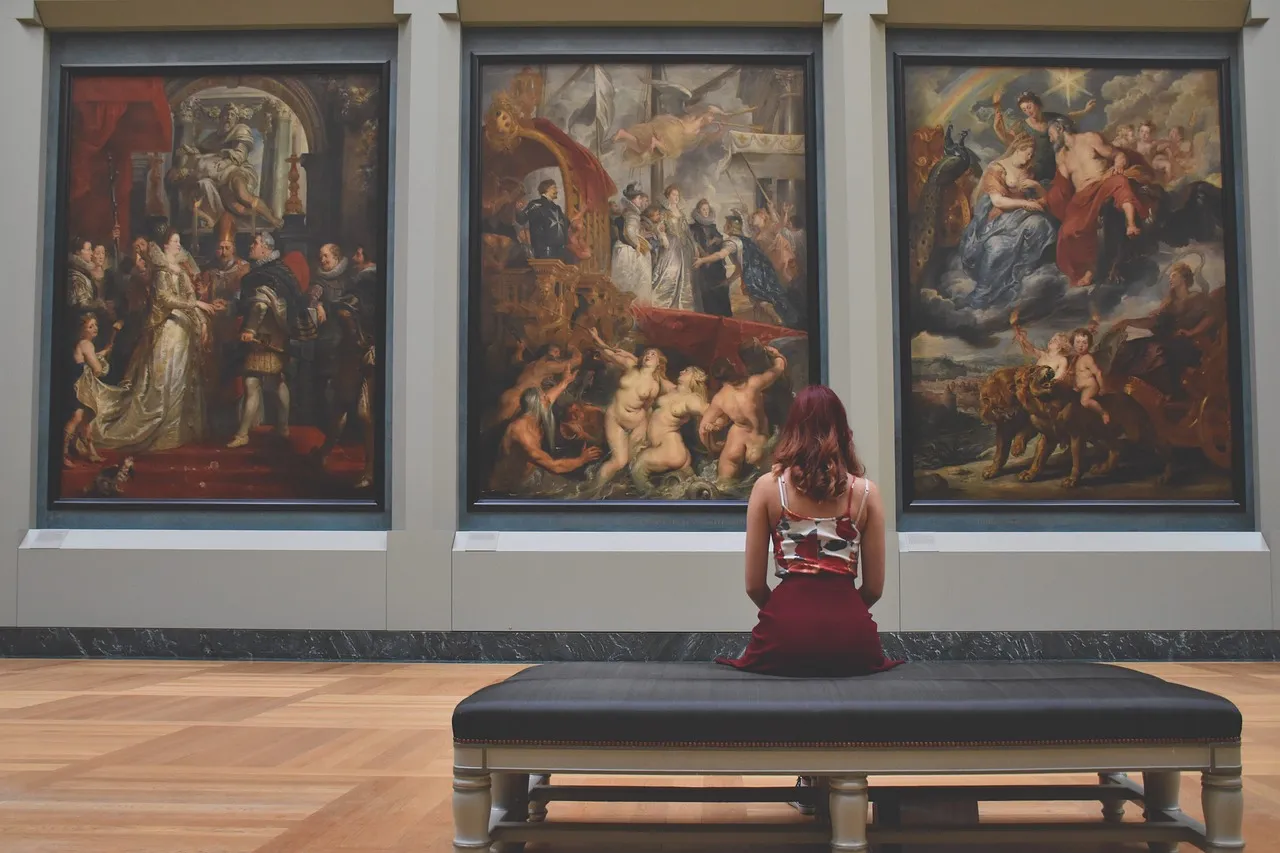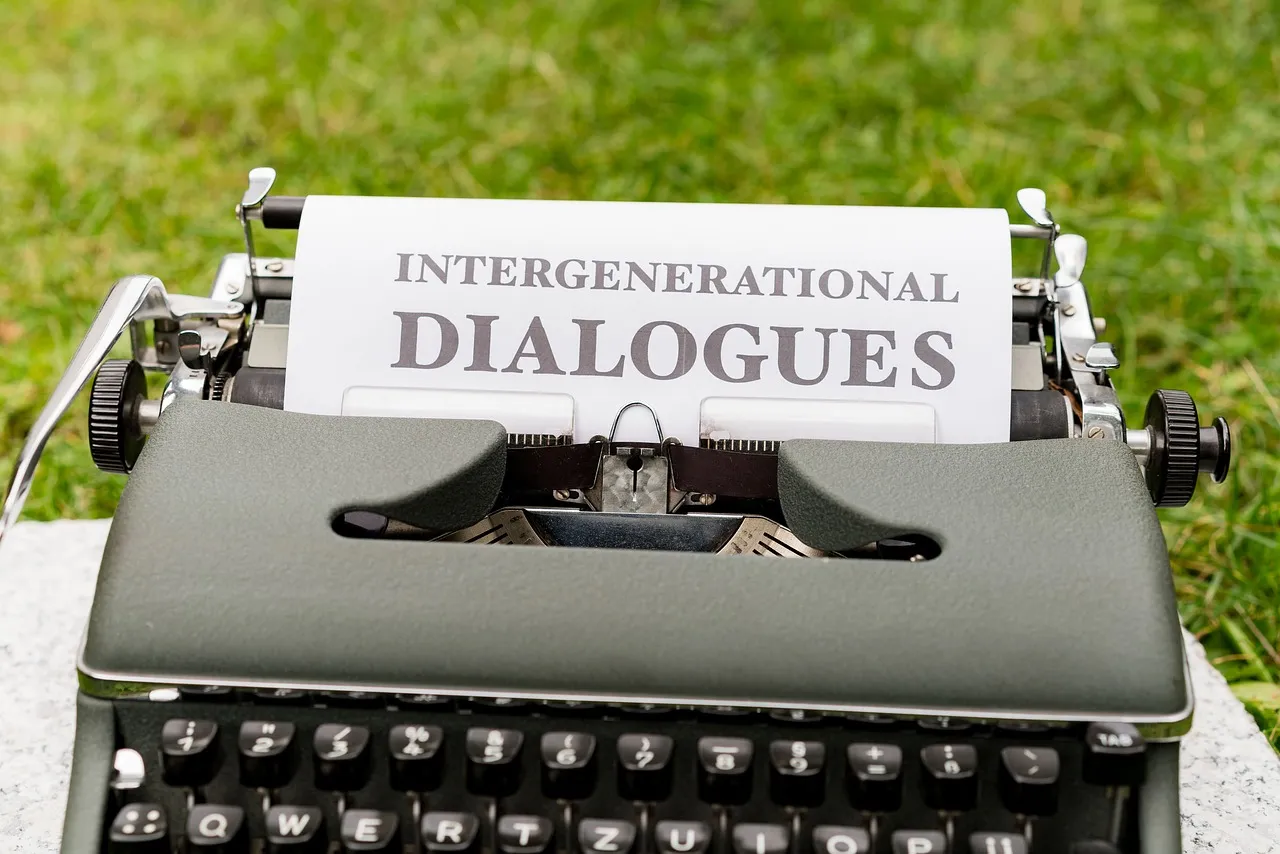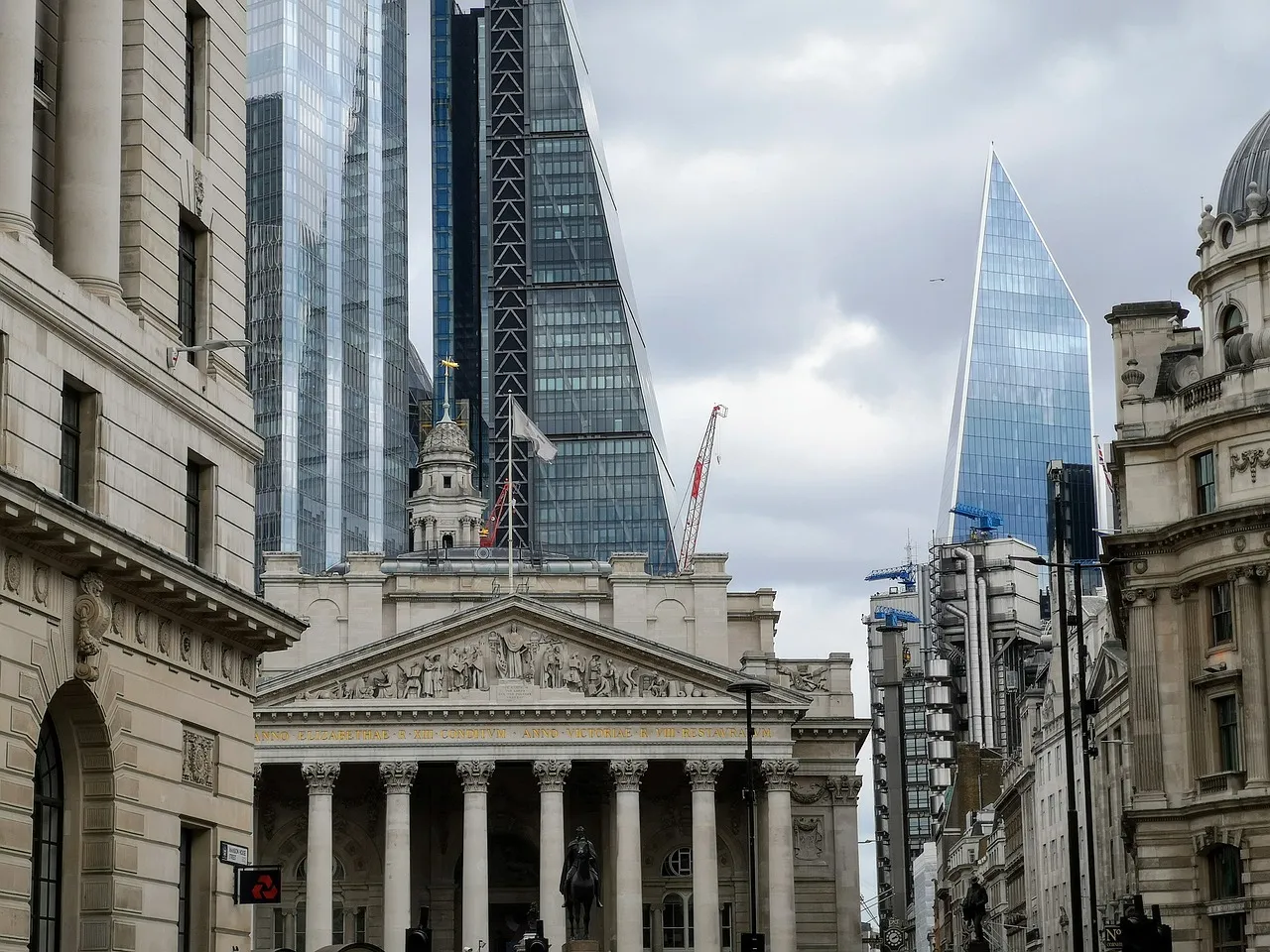In the realm of travel, some cities stand out not just for their architectural grandeur or culinary delights, but as true bastions of art and culture. These are the Art and Culture Capitals, where the spirit of human expression and creativity finds its most profound manifestation. In this blog post, we’ll embark on a journey through some of the world’s foremost cities that serve as epicenters for the arts, offering a deep dive into the cultural tapestry that defines them.
Art and Culture Capitals
Paris, France: The City of Light and Creativity
Paris, often hailed as the City of Light, is an unparalleled hub of art and culture. With iconic landmarks like the Louvre Museum, home to masterpieces like the Mona Lisa, and the Musée d’Orsay, showcasing an extensive collection of Impressionist masterpieces, Paris is a visual feast for art enthusiasts. The city’s bohemian neighborhoods, historic theaters, and vibrant street art further contribute to its status as a global cultural capital.
Florence, Italy: Renaissance Marvels in the Tuscan Hills
Nestled in the heart of Tuscany, Florence stands as a testament to the Renaissance period, with its architectural marvels and world-renowned art collections. The Uffizi Gallery houses works by Botticelli, Leonardo da Vinci, and Michelangelo, while the Florence Cathedral and the Palazzo Vecchio showcase the city’s rich history. Florence’s intimate connection to the arts is woven into its very fabric, making it a must-visit for those seeking cultural immersion.
Vienna, Austria: Symphony of Arts in the Imperial City
Vienna, the imperial city on the banks of the Danube, resonates with a symphony of arts and culture. The Vienna State Opera, the Belvedere Palace with Gustav Klimt’s “The Kiss,” and the MuseumsQuartier exemplify the city’s commitment to artistic excellence. As the birthplace of renowned composers like Mozart and Beethoven, Vienna’s musical legacy adds a dynamic layer to its cultural landscape, making it an indispensable destination for art connoisseurs.
New York City, USA: The Cultural Melting Pot
As a melting pot of cultures and ideas, New York City stands at the forefront of the global art scene. From the iconic Metropolitan Museum of Art to the cutting-edge contemporary exhibits at the Museum of Modern Art (MoMA), the city offers a diverse range of artistic experiences. Broadway theaters, street art in neighborhoods like Bushwick, and cultural events like the Tribeca Film Festival contribute to New York’s status as a dynamic cultural capital.
Barcelona, Spain: Gaudí’s Playground and Modernista Marvels
Barcelona, with its unique blend of Catalan culture and modernist architecture, is a treasure trove for art enthusiasts. Antoni Gaudí’s masterpieces, including the Sagrada Família and Park Güell, showcase the city’s avant-garde spirit. The Picasso Museum and the Joan Miró Foundation further contribute to Barcelona’s artistic allure. The city’s vibrant street life, festivals, and flamenco performances add a lively rhythm to its cultural richness.
Tokyo, Japan: The Fusion of Tradition and Innovation
Tokyo, a city where tradition meets cutting-edge innovation, has emerged as a vibrant center for contemporary art and culture. The Mori Art Museum, teamLab Borderless digital art museum, and traditional theaters like Kabuki-za exemplify Tokyo’s diverse cultural offerings. The city’s districts, from the historic Asakusa to the futuristic Akihabara, create a dynamic tapestry that reflects Japan’s rich heritage and modern creativity.
Berlin, Germany: Street Art Capital and Creative Hub
Berlin, with its gritty charm and vibrant energy, has established itself as a global hub for contemporary art and culture. The East Side Gallery, a stretch of the Berlin Wall adorned with murals, symbolizes the city’s resilience and artistic expression. The city’s diverse neighborhoods, creative spaces like the Kunsthaus Tacheles, and events like Berlin Art Week make it a mecca for those seeking an avant-garde cultural experience.
Art and Culture Capitals serve as beacons of human creativity, inviting travelers to explore the depth and diversity of artistic expression across the globe. Whether you’re captivated by the classical elegance of Paris, the Renaissance wonders of Florence, or the cutting-edge innovation of Tokyo, each city on this list offers a unique perspective on the intersection of art, culture, and the human spirit. So, pack your cultural curiosity and embark on a journey through these vibrant metropolises, where the world’s artistic pulse beats strongest.
Must-visit cultural capitals
For the avid traveler seeking a rich tapestry of history, art, and cultural diversity, the world is dotted with must-visit cultural capitals that stand as beacons of human creativity. In this blog post, we’ll embark on a global odyssey, exploring some of the most captivating cities that have earned their place as must-visit cultural capitals, each offering a unique and enriching experience.
Paris, France: The Eternal City of Art and Romance
Paris, often deemed the “City of Light,” effortlessly earns its place as a must-visit cultural capital. Beyond the iconic Eiffel Tower and the charming streets lined with bistros, Paris is home to world-class museums and art galleries. The Louvre, housing the enigmatic Mona Lisa, and the Musée d’Orsay, showcasing masterpieces of Impressionist art, make Paris a haven for art enthusiasts. The city’s architectural marvels, historical landmarks, and the poetic ambiance of the Seine River contribute to its unparalleled cultural allure.
Rome, Italy: The Eternal City of Antiquity
Rome, with its ancient ruins, awe-inspiring architecture, and rich history, beckons travelers to immerse themselves in the cultural legacy of the Roman Empire. The Colosseum, the Roman Forum, and the Pantheon transport visitors to a bygone era. Rome’s Vatican City, with St. Peter’s Basilica and the Sistine Chapel, adds a spiritual dimension to its cultural wealth. Amidst the cobbled streets and bustling piazzas, every corner of Rome tells a story of antiquity and enduring legacy.
Kyoto, Japan: Where Tradition Meets Tranquility
Kyoto, with its serene temples, traditional tea houses, and meticulously maintained gardens, is a cultural treasure trove that transports visitors to the heart of Japanese heritage. The Golden Pavilion (Kinkaku-ji), the Fushimi Inari Shrine with its iconic torii gates, and the historic Gion district are testaments to Kyoto’s commitment to preserving its cultural identity. The city’s annual Gion Matsuri festival and traditional tea ceremonies provide immersive experiences into Japan’s cultural tapestry.
Cairo, Egypt: Gateway to Ancient Wonders
Cairo, situated on the banks of the Nile, is a must-visit cultural capital that serves as the gateway to Egypt’s ancient wonders. The Pyramids of Giza, the Sphinx, and the Egyptian Museum house artifacts from pharaonic times, offering an unparalleled journey into the mysteries of ancient civilization. Cairo’s Islamic Cairo district, with its historic mosques and bustling bazaars, adds a dynamic layer to the city’s cultural richness.
Seville, Spain: Flamenco, Festivals, and Moorish Marvels
Seville, with its vibrant energy, flamenco rhythms, and architectural marvels, captures the essence of Andalusian culture. The Alcazar of Seville, a stunning palace blending Moorish and Christian influences, and the iconic Giralda tower showcase the city’s historical richness. Seville’s Semana Santa (Holy Week) and the Feria de Abril (April Fair) add a festive touch, making it a must-visit cultural capital for those seeking a dynamic blend of tradition and celebration.
Beijing, China: Imperial Grandeur and Contemporary Contrasts
Beijing, China’s capital, seamlessly weaves imperial grandeur with contemporary contrasts. The Forbidden City, with its opulent palaces and ancient architecture, stands as a testament to China’s imperial history. The Temple of Heaven and the Summer Palace further enrich the city’s cultural offerings. Modern Beijing, with its avant-garde art districts like 798 Art Zone, reflects the nation’s dynamic spirit and artistic innovation.
Mexico City, Mexico: A Tapestry of Mesoamerican and Colonial Heritage
Mexico City, nestled in the Valley of Mexico, is a cultural capital that unfolds a vibrant tapestry of Mesoamerican and colonial heritage. The ancient city of Teotihuacan, the historic center with its Zócalo square and the Metropolitan Cathedral, and the Frida Kahlo Museum showcase the city’s diverse cultural influences. Mexico City’s lively street markets, traditional music, and colorful murals contribute to its dynamic cultural scene.
These must-visit cultural capitals beckon travelers to embark on a global odyssey of art, history, and diverse traditions. From the romantic allure of Paris to the ancient wonders of Rome, the tranquil charm of Kyoto to the dynamic energy of Beijing, each city on this list offers a unique cultural experience. Whether you’re captivated by the grandeur of imperial palaces, the mysteries of ancient civilizations, or the vibrant celebrations of local festivals, these cultural capitals promise an enriching journey into the heart and soul of human creativity. So, pack your curiosity and explore these cities where the past and present converge to create a cultural tapestry that transcends time.
Art and culture events worldwide
In the vibrant tapestry of our world, art and culture events serve as dynamic threads that weave together diverse stories, traditions, and creative expressions. From international art fairs to cultural festivals that celebrate heritage, this blog post takes you on a global odyssey, exploring the most captivating and enriching art and culture events that unfold across the continents.
Venice Biennale, Italy: The Pinnacle of Contemporary Art
Every two years, Venice becomes a mecca for contemporary art enthusiasts during the Venice Biennale. Established in 1895, this renowned event showcases a diverse array of visual arts, including painting, sculpture, film, and installations. The historic venues, such as the Giardini and the Arsenale, transform into immersive spaces where artists from around the world converge to push the boundaries of artistic expression.
Edinburgh Festival Fringe, Scotland: A Feast of Performing Arts
The Edinburgh Festival Fringe, held annually in August, is the world’s largest arts festival, attracting performers and audiences from every corner of the globe. The Scottish capital becomes a stage for theater, comedy, dance, and music performances, offering a unique platform for both established artists and emerging talents. With thousands of shows spanning various genres, the festival epitomizes the diversity and creativity of the performing arts.
Diwali, India: The Festival of Lights
Diwali, the festival of lights, is one of the most significant cultural events in India and among the Indian diaspora worldwide. Celebrated by Hindus, Sikhs, Jains, and Buddhists, Diwali marks the triumph of light over darkness and good over evil. The festival is characterized by colorful decorations, the lighting of lamps (diyas), fireworks, and vibrant cultural performances, making it a visually spectacular and spiritually significant event.
Rio Carnival, Brazil: Samba, Color, and Extravaganza
The Rio Carnival in Brazil is synonymous with exuberance, music, and dance. Held annually before Lent, this world-famous event transforms the streets of Rio de Janeiro into a pulsating celebration of Brazilian culture. Samba parades, vibrant costumes, and infectious rhythms create an electrifying atmosphere, attracting millions of visitors from around the globe to experience the grandeur of one of the largest carnivals on Earth.
Day of the Dead (Día de los Muertos), Mexico: Honoring Ancestors
Día de los Muertos, or Day of the Dead, is a poignant and vibrant cultural event in Mexico that honors deceased loved ones. Celebrated from October 31 to November 2, families create elaborate altars (ofrendas) adorned with marigolds, candles, and the favorite foods of the departed. Parades, music, and traditional dances fill the streets, creating a unique and heartfelt atmosphere of remembrance and celebration.
Berlin International Film Festival (Berlinale), Germany: A Cinematic Extravaganza
The Berlin International Film Festival, known as Berlinale, is one of the most prestigious film festivals globally, attracting filmmakers, actors, and cinephiles alike. Held annually in February, Berlinale screens a diverse range of films, from avant-garde independent productions to high-profile international releases. The festival’s unique sections, including the Berlinale Palast screenings and the Forum for New Cinema, contribute to its reputation as a dynamic and influential cultural event.
Harbin Ice Festival, China: Frozen Artistry in Winter Wonderland
In the frigid winters of Harbin, China, the Ice Festival transforms the city into a breathtaking winter wonderland. Artists from around the world sculpt intricate ice and snow installations, creating a mesmerizing display of frozen artistry. Visitors can explore illuminated ice castles, attend ice lantern shows, and marvel at massive ice sculptures, making it a cultural celebration that embraces the beauty of winter.
Art and culture events worldwide provide a window into the rich diversity of human creativity and heritage. Whether you’re captivated by the contemporary art scene at the Venice Biennale, enthralled by the pulsating rhythms of the Rio Carnival, or moved by the spiritual significance of Día de los Muertos in Mexico, these events offer unique insights into the global tapestry of cultural expression. As you plan your travels, consider immersing yourself in the vibrant energy of these events, where the world comes together to celebrate the boundless possibilities of human imagination and ingenuity.
Famous art galleries in cultural capitals
Cultural capitals around the world are adorned with renowned art galleries that house some of the most celebrated masterpieces in history. In this blog post, we will embark on a journey to explore the famous art galleries nestled in these cultural hubs, where each stroke of the brush and every chisel mark tells a tale of artistic brilliance and cultural richness.
The Louvre, Paris: A Palace of Art and History
The Louvre, located in the heart of Paris, is not just a museum; it is an architectural masterpiece and a treasure trove of artistic wonders. Home to the iconic Mona Lisa, the Venus de Milo, and the Winged Victory of Samothrace, the Louvre spans centuries and civilizations. From ancient Egyptian artifacts to Renaissance paintings, the Louvre is a cultural voyage through time, housed within the grandeur of a former royal palace.
The Metropolitan Museum of Art (The Met), New York City: The Crown Jewel of Fifth Avenue
Nestled along New York City’s Fifth Avenue, The Metropolitan Museum of Art, commonly known as The Met, is a cultural beacon that attracts millions of visitors annually. With over two million works of art spanning 5,000 years, The Met is a comprehensive exploration of human creativity. From European paintings to Egyptian artifacts and Asian sculptures, each gallery within The Met offers a unique glimpse into the diverse facets of global artistry.
The Vatican Museums, Vatican City: Papal Treasures and Michelangelo’s Sistine Chapel
In the heart of Vatican City, The Vatican Museums house an extensive collection amassed over centuries by the Catholic Church. The crowning jewel, the Sistine Chapel, adorned with Michelangelo’s breathtaking frescoes, is a pilgrimage for art lovers. From Raphael’s Rooms to the Gallery of Maps, these museums showcase the opulence of papal treasures and the enduring influence of Renaissance art on the Vatican’s cultural legacy.
The State Hermitage Museum, St. Petersburg: Imperial Splendor on the Neva River
Nestled along the banks of the Neva River, the State Hermitage Museum in St. Petersburg is a cultural gem within the imperial city. Housed in the opulent Winter Palace, the Hermitage is one of the largest and oldest museums in the world. Its vast collection spans from ancient civilizations to contemporary art, featuring works by Rembrandt, da Vinci, and Van Gogh. The grandeur of the Hermitage is not just in its art but in the splendor of its architectural setting.
The British Museum, London: A Global Exploration of Human History
In the heart of London, The British Museum stands as a testament to the breadth and depth of human history. From the Rosetta Stone to the Elgin Marbles, this museum houses artifacts from every corner of the globe. The Enlightenment Gallery, Egyptian mummies, and the Assyrian Lion Hunt reliefs provide a comprehensive journey through civilizations, making The British Museum a cultural encyclopedia on display.
The Uffizi Gallery, Florence: Renaissance Masterpieces on the Arno River
Overlooking the Arno River, the Uffizi Gallery in Florence is a celebration of Renaissance art and culture. Home to works by Botticelli, Leonardo da Vinci, and Michelangelo, the Uffizi showcases the artistic brilliance that flourished during the Italian Renaissance. The Vasari Corridor, connecting the Uffizi to the Pitti Palace, adds a touch of intrigue to this cultural haven nestled in the heart of Tuscany.
The Prado Museum, Madrid: Spanish Masterpieces and European Artistry
In the heart of Madrid, the Prado Museum is a showcase of Spanish artistry and a testament to Europe’s cultural heritage. Home to masterpieces by Velázquez, Goya, and El Greco, the Prado captures the evolution of European painting from the 12th to the early 20th century. With over 8,000 paintings on display, the Prado is a captivating journey through the artistic evolution of the Iberian Peninsula and beyond.
Famous art galleries in cultural capitals are more than repositories of art; they are living narratives that encapsulate the essence of human creativity and cultural evolution. From the opulent halls of The Louvre in Paris to the rich tapestry of The Met in New York City, these galleries invite visitors to embark on a visual odyssey through centuries, civilizations, and artistic movements. Each masterpiece on display is a brushstroke in the grand canvas of global culture, waiting to be discovered and admired in these hallowed halls of artistic brilliance.
Cultural exchange programs in capitals
Cultural exchange programs play a pivotal role in fostering understanding, promoting mutual respect, and building bridges between nations. In this blog post, we’ll delve into the significance of cultural exchange programs specifically within capital cities, where the exchange of ideas, traditions, and perspectives becomes a dynamic force in shaping global relations.
Washington, D.C.: Diplomacy Through Culture
As the capital of the United States, Washington, D.C., serves as a hub for international diplomacy and cultural exchange. The International Visitor Leadership Program (IVLP), administered by the U.S. Department of State, brings emerging leaders and professionals from around the world to engage in a variety of cultural and educational experiences. These programs facilitate connections between nations, fostering mutual understanding and collaboration on a wide range of issues.
London, UK: The British Council’s Cultural Diplomacy Initiatives
In London, the British Council operates an array of cultural exchange programs that extend the UK’s influence across the globe. From arts festivals and educational partnerships to language programs, the British Council’s initiatives promote cultural dialogue and collaboration. Through these programs, London continues to be a cultural epicenter, nurturing artistic expression and fostering international connections.
Paris, France: Alliance Française’s Cultural Outreach
Paris, renowned for its artistic and cultural legacy, is home to the Alliance Française, a global network promoting French language and culture. The organization organizes a multitude of cultural exchange programs, including language courses, art exhibitions, and literary events. By doing so, Paris remains at the forefront of cultural diplomacy, welcoming individuals from diverse backgrounds to engage in a shared appreciation of French arts and language.
Beijing, China: Confucius Institutes as Cultural Ambassadors
As China’s capital, Beijing takes center stage in promoting cultural exchange through the Confucius Institutes. These institutes, established worldwide, aim to enhance understanding and appreciation of Chinese language and culture. Offering language courses, cultural events, and academic partnerships, the Confucius Institutes in Beijing contribute to building enduring connections between China and other nations.
Tokyo, Japan: JENESYS Program Nurturing Youth Diplomacy
In Tokyo, the Japan-East Asia Network of Exchange for Students and Youths (JENESYS) program is a shining example of cultural exchange initiatives. Sponsored by the Japanese government, JENESYS brings together young people from Japan and other Asian countries to foster mutual understanding, friendship, and collaboration. By engaging in cultural activities, participants develop a deeper appreciation for the rich tapestry of Asian heritage.
Berlin, Germany: Goethe-Institut’s Global Outreach
Berlin’s Goethe-Institut is a cultural powerhouse, promoting the German language and facilitating cultural exchange programs around the world. Through language courses, art exhibitions, and collaborative projects, the Goethe-Institut strengthens cultural ties and fosters dialogue between Germany and other nations. Berlin’s status as a cultural capital is elevated through these initiatives that transcend borders.
Delhi, India: ICCR’s Cultural Diplomacy Initiatives
As the capital of India, Delhi is a melting pot of diverse cultures, and the Indian Council for Cultural Relations (ICCR) plays a vital role in promoting cultural exchange. The ICCR organizes a range of programs, including cultural performances, art exhibitions, and educational exchanges, showcasing India’s rich heritage and fostering a deeper understanding of the country’s cultural tapestry.
Cultural exchange programs in capital cities serve as catalysts for global understanding and collaboration. Whether through language courses, artistic performances, or educational partnerships, these initiatives bridge gaps, break down stereotypes, and create meaningful connections between nations. Capitals become not only political and economic hubs but also cultural epicenters where the exchange of ideas becomes a powerful tool for building a more interconnected and harmonious world. As we celebrate the impact of cultural exchange programs, we acknowledge the role of capital cities as dynamic platforms for fostering mutual respect, appreciation, and collaboration on the global stage.
Historical significance of cultural capitals
Cultural capitals, with their rich history and artistic legacies, stand as testaments to the enduring impact of human creativity. In this blog post, we will embark on a journey through time to explore the historical significance of cultural capitals, understanding how these cities have shaped and reflected the cultural evolution of societies across centuries.
Athens, Greece: The Cradle of Western Civilization
As the birthplace of democracy, philosophy, and classical art, Athens holds unparalleled historical significance as a cultural capital. In ancient times, luminaries like Plato, Aristotle, and Socrates walked its streets, and the Acropolis became a symbol of artistic and architectural prowess. The historical legacy of Athens echoes through the ages, influencing the foundations of Western thought and democracy.
Rome, Italy: The Eternal City and Cultural Nexus
Rome, often referred to as the “Eternal City,” served as the heart of the Roman Empire and a cultural nexus that shaped the Western world. With architectural marvels like the Colosseum, the Pantheon, and the Roman Forum, Rome became a living canvas illustrating the grandeur of ancient civilization. Its influence extended through art, literature, and governance, leaving an indelible mark on the cultural history of Europe and beyond.
Florence, Italy: The Renaissance Birthplace
Florence, nestled in the heart of Tuscany, holds a pivotal place in history as the birthplace of the Renaissance. During the 14th to 17th centuries, the Medici family and artists like Leonardo da Vinci and Michelangelo turned Florence into a cultural powerhouse. The city’s patronage of the arts, scientific inquiry, and humanism sparked a cultural renaissance that would forever alter the course of Western civilization.
Kyoto, Japan: A Tapestry of Traditional Elegance
Kyoto, the ancient capital of Japan for over a millennium, epitomizes the historical significance of cultural capitals in preserving tradition. With its serene temples, traditional tea houses, and meticulously maintained gardens, Kyoto stands as a living testament to Japan’s rich cultural heritage. The city’s historical sites, such as Kinkaku-ji (Golden Pavilion) and Fushimi Inari Shrine, reflect the enduring beauty of Japanese traditions.
Paris, France: The Enlightenment Hub
In the 18th century, Paris emerged as the epicenter of the Enlightenment, a cultural and intellectual movement that challenged established norms and championed reason and individual rights. Philosophers like Voltaire and Rousseau, along with artistic luminaries such as Voltaire and Diderot, turned Paris into a beacon of intellectual freedom. The city’s historical significance in fostering new ideas and artistic expression remains palpable to this day.
Vienna, Austria: The Imperial Center of Arts and Music
During the Habsburg Empire, Vienna became a cultural capital where arts and music flourished. The city was a hub for renowned composers like Mozart, Beethoven, and Strauss, and it played a pivotal role in the development of classical music. Vienna’s imperial palaces, such as Schönbrunn and Hofburg, became centers of artistic patronage, leaving an indelible mark on the cultural landscape of Europe.
Delhi, India: A Tapestry of Dynasties and Diverse Cultures
Delhi, with its long and complex history, has been a capital for several dynasties, including the Mughals and the British. The city’s historical significance lies in its role as a cultural crossroads, blending influences from various regions and periods. From the grandeur of the Mughal architecture in Old Delhi to the colonial legacy of New Delhi, the city narrates the story of India’s diverse cultural heritage.
The historical significance of cultural capitals is woven into the fabric of human civilization. These cities, with their enduring legacies and cultural contributions, have shaped the course of history, influencing art, philosophy, governance, and societal norms. As we explore the tapestry of cultural capitals, we gain a profound understanding of the interconnectedness of cultures and the transformative power of creativity that continues to resonate through the ages. In the footsteps of philosophers, artists, and visionaries, these cities stand as living monuments to the beauty of human expression and the historical richness of our shared heritage.
